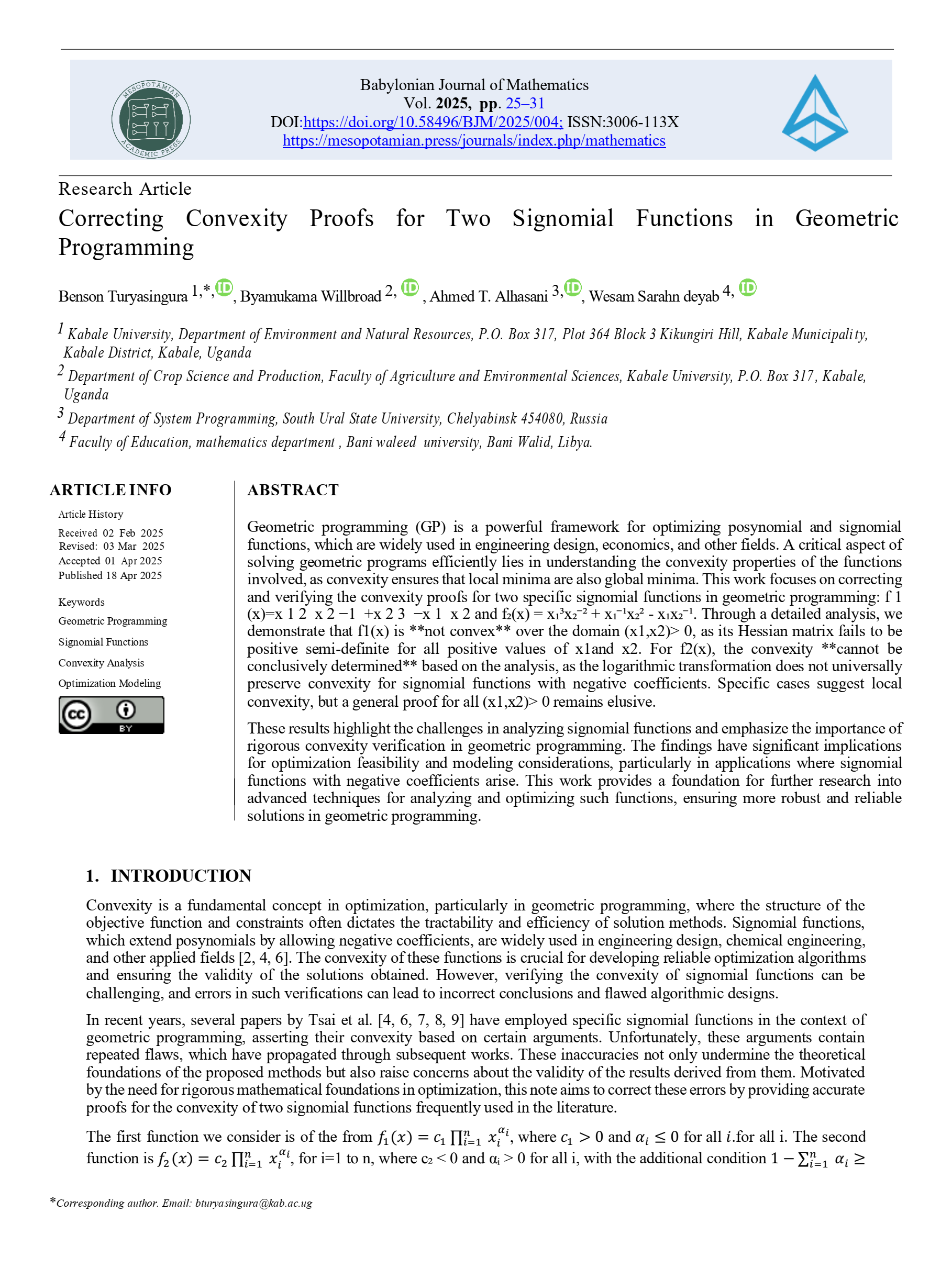Correcting Convexity Proofs for Two Signomial Functions in Geometric Programming
Main Article Content
Abstract
Geometric programming (GP) is a powerful framework for optimizing posynomial and signomial functions, which are widely used in engineering design, economics, and other fields. A critical aspect of solving geometric programs efficiently lies in understanding the convexity properties of the functions involved, as convexity ensures that local minima are also global minima. This work focuses on correcting and verifying the convexity proofs for two specific signomial functions in geometric programming: f 1 (x)=x 1 2 x 2 −1 +x 2 3 −x 1 x 2 and f₂(x) = x₁³x₂⁻² + x₁⁻¹x₂² - x₁x₂⁻¹. Through a detailed analysis, we demonstrate that f1(x) is **not convex** over the domain (x1,x2)> 0, as its Hessian matrix fails to be positive semi-definite for all positive values of x1and x2. For f2(x), the convexity **cannot be conclusively determined** based on the analysis, as the logarithmic transformation does not universally preserve convexity for signomial functions with negative coefficients. Specific cases suggest local convexity, but a general proof for all (x1,x2)> 0 remains elusive.
These results highlight the challenges in analyzing signomial functions and emphasize the importance of rigorous convexity verification in geometric programming. The findings have significant implications for optimization feasibility and modeling considerations, particularly in applications where signomial functions with negative coefficients arise. This work provides a foundation for further research into advanced techniques for analyzing and optimizing such functions, ensuring more robust and reliable solutions in geometric programming.
